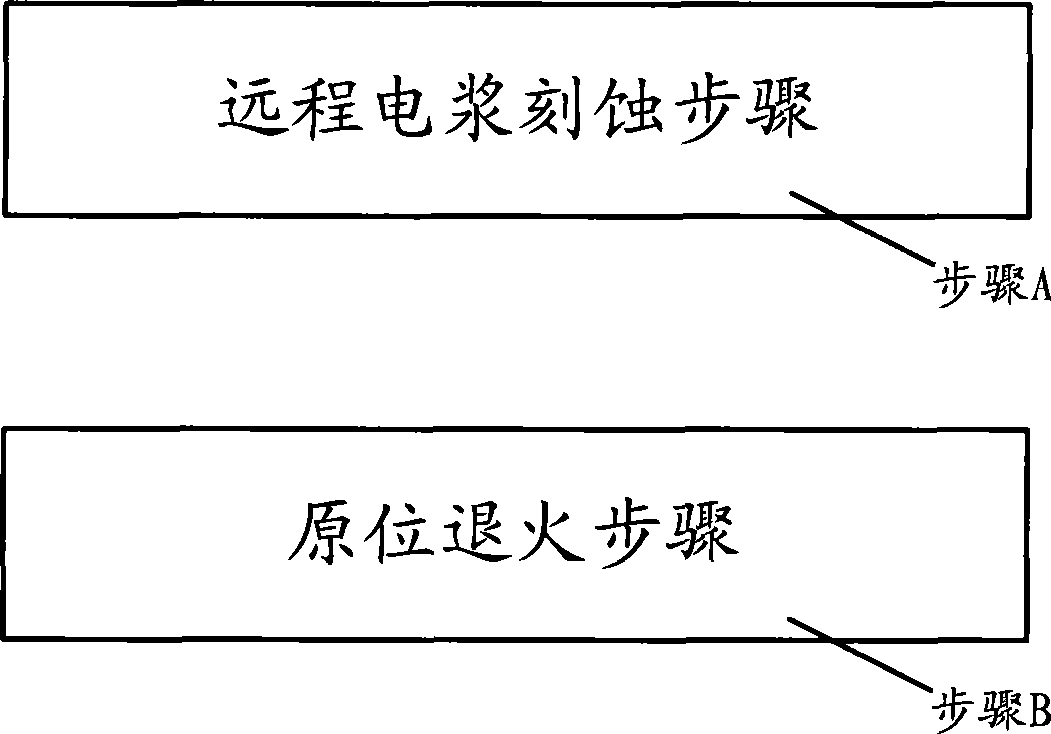Method for precleaning thin film surface oxide before deposition
A surface oxide, pre-cleaning technology, used in electrical components, semiconductor/solid-state device manufacturing, circuits, etc., can solve the problems of device damage at the bottom of the contact layer, difficult to fully and effectively remove, affecting transistor performance, etc., to reduce contact resistance. Effect
- Summary
- Abstract
- Description
- Claims
- Application Information
AI Technical Summary
Problems solved by technology
Method used
Image
Examples
Embodiment 1
[0024] The invention introduces a method for pre-cleaning the surface oxide of the contact hole adhesion layer before deposition, the pre-cleaning method adopts a dry chemical pre-cleaning process, and mainly includes the following steps:
[0025] Step A: remote plasma etching step; etching gas includes nitrogen fluoride (NF 3 ), ammonia (NH 3 ), hydrogen (H 2 ), argon (Ar), helium (He), low-power plasma converts nitrogen fluoride and ammonia into fluorides, and fluorides react with oxides to form silicates. In this embodiment, the above-mentioned fluorides are ammonium fluoride and ammonium difluoride. Of course, the above-mentioned fluoride may be only ammonium fluoride or only ammonium difluoride.
[0026] In this step, the hydrogen in the etching gas plays a role of heat transfer in this embodiment, so that the heat transfer effect during in-situ annealing is better. The role of argon and helium is to carry the reaction gas, so that the effect of this embodiment is bet...
Embodiment 2
[0031] The difference between this embodiment and Embodiment 1 is that in this embodiment, in the remote plasma etching step of step A: the etching gas is hydrogen fluoride (HF), ammonia (NH 3 ), hydrogen (H 2 ), argon (Ar), helium (He), low-power plasma converts hydrogen fluoride and ammonia into fluoride, which reacts with oxide to form silicate.
PUM
 Login to View More
Login to View More Abstract
Description
Claims
Application Information
 Login to View More
Login to View More - R&D
- Intellectual Property
- Life Sciences
- Materials
- Tech Scout
- Unparalleled Data Quality
- Higher Quality Content
- 60% Fewer Hallucinations
Browse by: Latest US Patents, China's latest patents, Technical Efficacy Thesaurus, Application Domain, Technology Topic, Popular Technical Reports.
© 2025 PatSnap. All rights reserved.Legal|Privacy policy|Modern Slavery Act Transparency Statement|Sitemap|About US| Contact US: help@patsnap.com

